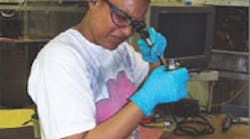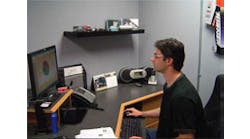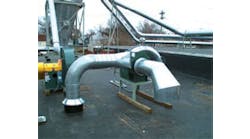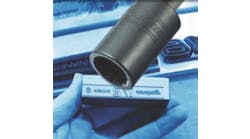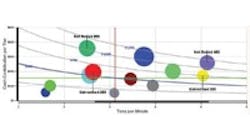General Automotive Manufacturing’s shopfloor personnel spot burrs and other part defects with Hawkeye Precision borescope systems.
What General Automotive Manufacturing didn’t see was costing it money. Burrs and other part defects went undetected by the company’s manufacturing team and were not found until the quality department did final inspection. Then, parts had to be reprocessed “blindly” because the defects couldn’t be seen at the manufacturing cell level, and the re-processing was expensive and timeconsuming.
As a shop that produces machined metal parts used in fuel systems, hydraulic assemblies, brake systems, and gas and diesel engines, General Automotive knew that burrs, sharp edges and other defects can be extremely detrimental, especially to mission-critical parts. Sharp edges or small burrs on parts can erode and eventually clog a system, preventing it from working properly, as with hydraulic and fuel systems that have very small openings, said Gary Kosterman, quality manager at General Automotive.
The company needed inspection tools that could be used inside deep bores and in small-diameter holes. It also had to report defects and process problems much more quickly to manufacturing teams to ensure defects did not occur and to meet its promise of 100 percent on-time delivery of orders. The company also wanted a tool that could be used in its quality lab and on its manufacturing floor.
Its solution was Hawkeye Precision portable borescopes from Gradient Lens Corp. (www.gradientlens.com). These borescopes are designed to go anywhere in a manufacturing plant.
“The borescopes help with our mission of 100 percent on-time delivery because we can use them for many different kinds of inspection on the shop floor, instead of having to take a component into a lab for inspection,” said Kosterman. Early detection is key, he added. “Containment is easier, as is changing the manufacturing process when we need to.”
At General Automotive, the borescopes fit conveniently into multiple work cells where necessary. Each of the company’s manufacturing cells could include a lathe, a machining center and a gundrill. Each is a selfcontained manufacturing unit with a visual inspection station. These stations now are equipped with Hawkeye borescopes, portable or fixed light sources and, often, video systems (with camera and monitor) connected to the borescopes.
Operators can view part images on-screen rather than through the scope, reducing eye strain for those who might spend a good deal of their day inspecting components. In addition, the monitor provides a large viewing image that makes for easy defect detection and group viewing.
More importantly, the system provides immediate detection capabilities at the point of operation and allows containment of defects early in the manufacturing process. For example, if a gundrill operator at General Automotive receives a part from the machining center and detects a bad surface finish or large burr in a deep hole, he or she can immediately raise a red flag to contain the problem.
General Automotive’s cell concept gives operators direct input for process improvement. And, the borescope visual inspection is as important to the manufacturing and quality processes as some of the company’s metrology procedures, Kosterman added.
Although the borescope’s primary functions are checking machined parts, engineers at General Automotive also use them to diagnose trouble on assembly line machines. Doing so saves them time and labor, as well as provides the accurate images they need.
